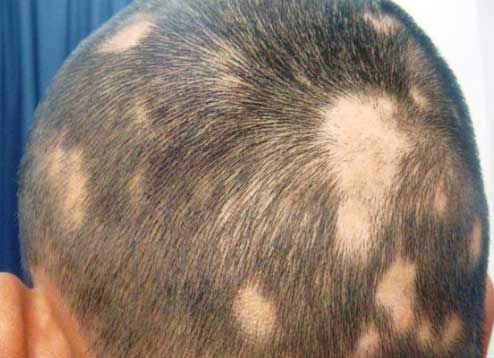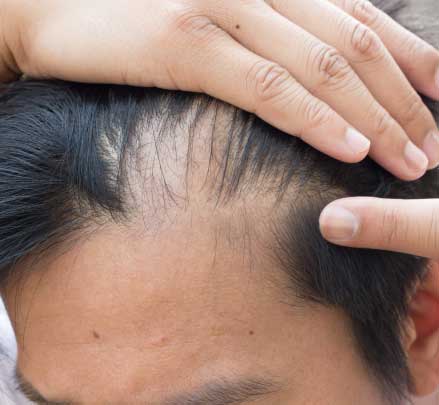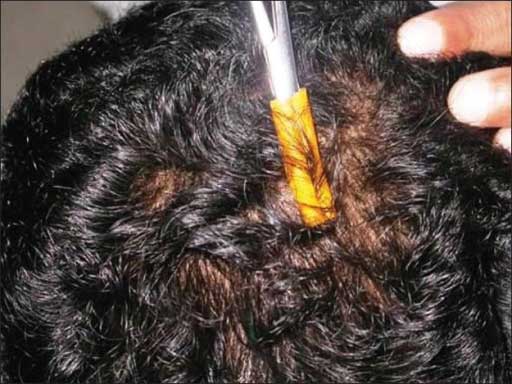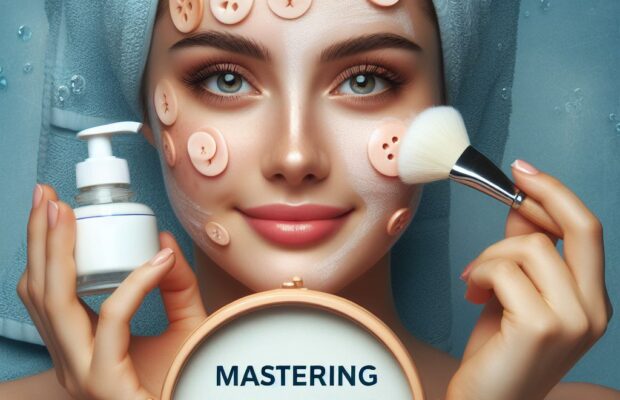Alopecia: Types, Causes, Symptoms, Diagnosis and Management
Are you lossing your hair while combing, brushing shampooing or styling? Is your crown widening or hair is thinning?
If yes, then get alarmed as this may be alopecia. It has become one of the major cause of distress these days.

Alopecia
What is Alopecia?
Alopecia may be defined as loss of hair from the head or any other part of the body that normally have hair growth but mostly this condition affects the head. Alopecia is not only confined to aged individuals. These days even middle-aged and adults are also affected by it.

What is Alopecia
In general, there are 1 lakh to 1.5 lakh hair strands on our head and about 100 hair strands are lost every day. But the hair loss is balanced by the hair grown the same way every day. If this balance is disturbed it leads to baldness.
What are the Types of Alopecia?
Alopecia is of several types. But the commonest type is androgenic alopecia or male pattern type baldness. It affects more than. Half of the men who are above 50 years. However, it may also start at an early 30’s. This condition may affect both men and women but is more in males. Mostly this type of baldness is characterized by receding hairline. It includes a bi-temporal and central recession. The remnant hairs lead to a horseshoe shape. This type of baldness may run in families. Rarely there is complete hair loss due to male pattern baldness. High level of male hormone is considered responsible for male androgenic alopecia. Another type of alopecia includes female pattern baldness where scalp top, frontal and parietal regions are affected, Alopecia areata that is an autoimmune disorder and is characterized by loss of hair from unusual sites such as eyebrows. Scarring alopecia caused due to injury or following surgery. Trichotillomania caused due to pulling of hairs. One more type of alopecia is traction Alopecia is caused due to the rigorous brushing of the hair or heat styling.
What are the Common Symptoms of Alopecia?
The common symptoms of alopecia are a loss of hairs in circular form, dandruff, skin lesions, scarring. The characteristics symptoms distinguishing the types of alopecia has been discussed above along with the types.
What are the Causes of Alopecia?
Alopecia is caused due to skin conditions, hormonal imbalance systemic illness, and certain medications. Some other causes include malnutrition, iron deficiency, fungal infection HIV/AIDS, Lupus erythematosus, sarcoidosis, genetics, trauma, certain medications such as blood pressure medicines and contraceptives, chemotherapy, radiotherapy, folliculitis, Secondary syphilis, pregnancy, childbirth, stress, pollution, chemical hair products, styling, and poisoning.

What are the Causes of Alopecia
How is Alopecia Diagnosed
Your doctor may ask you to have pull test, pluck test, daily hair count of hair fallen during shampooing and combing. Biopsy of scalp and trichoscopy may also be recommended. Other tests include Savin scale and Ludwig scale to detect female pattern baldness and Hamilton scale and Norwood scale to detect male pattern baldness.

How is Alopecia Diagnosed
Lao your doctor may question you about family history of alopecia, any medication if you are taking and any previous infection and any medication if taking.
How to Management of Alopecia
A dermatologist may prescribe certain medicines to prevent male pattern baldness. To treat Alopecia areata corticosteroids are injected monthly. Immunosuppressants are also prescribed in case of Alopecia areata.

How to Management of Alopecia
In the case of female pattern baldness hormonal modulators given. Hair transplantation is also done but it is costly and is done in many sessions.
Surgery such as scalp flaps, hair loss reduction, and follicle transplants. Wigs can also be used or you may also try hair restyles such as combing over the left over hair to cover the bald area.
How is Hair Loss of Eyebrows Treated
Hair loss of eyebrows is caused by hormonal imbalance, chemotherapy, and autoimmunity. Hypothyroidism may lead to loss of outer 1/3rd of the eyebrow.
Eyebrow Embroidery or micro pigmentation (tattooing) is used in the case of eyebrow loss.
Diet for Alopecia
Consume whole grains, seeds, nuts, beans, calcium rich food, for example, nut milk, tofu, soy products, and green leafy vegetables to prevent or control alopecia. Switch to healthy fats rich in omega-3 fatty acids, for example, canola oil, walnuts, olive oil, flax seed and hemp seed. Other Omega-3 fatty acids sources are trout, tuna, mackerel, sardines, and salmon. Eat fruits and vegetables as they are rich in vitamins and antioxidants. Drink lots of water and avoid alcohol, sugary food, processed food, and fatty foods, refined sugars and limit the intake of animal meat and quit smoking.
If your friend or a family member is suffering from alopecia provide them psychological and social support so that they could accept their appearance instead of facing social withdrawal.














































